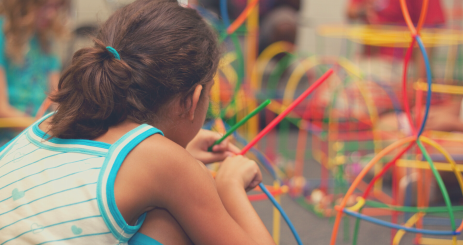Take – a – Break Space
What’s Inside:
Why use Take – a – Break
How to Introduce the Space
Managing Misbehavior
Download and Print this Article HERE

Why Use Take – a – Break Space:
When a student is angry or upset, s/he may benefit from time away from others to calm down. If you have space for this in your classroom, you can support the student and re-engage them in the learning activity more efficiently than if you sent them out of the room or to the office. Using a Take-a-Break space is different from a negative consequence and is not a punishment or a traditional time-out (see our “Using Time Out In the Classroom” article for details about that strategy). Thus, students should be encouraged to choose to “take-a-break” if they are feeling overwhelmed.
Benefits:
- Having a take-a-break space communicates that experiencing emotions and becoming overwhelmed is normal and that it is acceptable to ask for time alone.
- You can use it to help students gain self-awareness (Am I feeling strong emotions? Could I benefit from cooling down?).
- You can use it to teach coping skills, like deep breathing, thinking more positive thoughts, using distraction (look at a beach scene) to help you calm down. Self-regulation skills are associated with academic productivity and positive peer relations.
- When a child is escalating emotionally, giving a consequence or trying to “talk them down” may actually escalate them further. Administering a natural consequence (e.g., cleaning up crayons thrown on the ground) will be more effective when they are calm.

Introducing the Space:
Introduce the idea of take-a-break space by explaining that everyone gets frustrated and overwhelmed sometimes. You can talk about times when you have needed a break.
Discuss how someone would know that they need a break. The class could generate ideas about the cues in someone’s body, in someone’s thoughts, and in someone’s face. Pictures may help young children to understand and remember the signs.
Model how to use the space and what to do while in the space. Periodically, teachers can use the space to model how it works.
“Class, I’m having a difficult time being on my A-game right
now so I am going to take a few minutes to sit down and
catch my breath.”
Managing Student Misbehavior During Take – a – Break:
When possible, ignore mild misbehavior during take-a-break time. Some children will try to get the teacher’s attention or peers’ attention by whining and complaining (e.g., “this is unfair”), making noises, or giving mild verbal insults (e.g., “this is stupid”); especially if it was not their idea to take-a-break.
As the student quiets down, praise the improvement.
The teacher should check in with the student after 5 minutes and, if calm, invite the child to rejoin the group. If not calm, offer to work with the student (to the extent possible) to help them calm down.
Putting Take – a – Break to Use:
- Students and teachers can coconstruct guidelines for howand when to use the space (e.g., one student at a time). This helps students feel ownership of the space.
- It is important to have a guideline that the space can be used by student choice or following teacher encouragement.
- You can give this space a creative name like the “Zen Den.” Teachers can physically arrange the room so that there is a comfortable nook (bean bags, tent) and strategies to use when in the space (e.g., squeeze ball, picture of the beach, steps for taking deep breaths).
- Set a time limit for the take-abreak space so that students do not over use it.
- Separate take-a-break space from time out space if using time out.
External Resources:
http://www.teachinginprogress.com/2016/07/how-to-set-up-introduce-implement-take.html
Download and Print this Article HERE